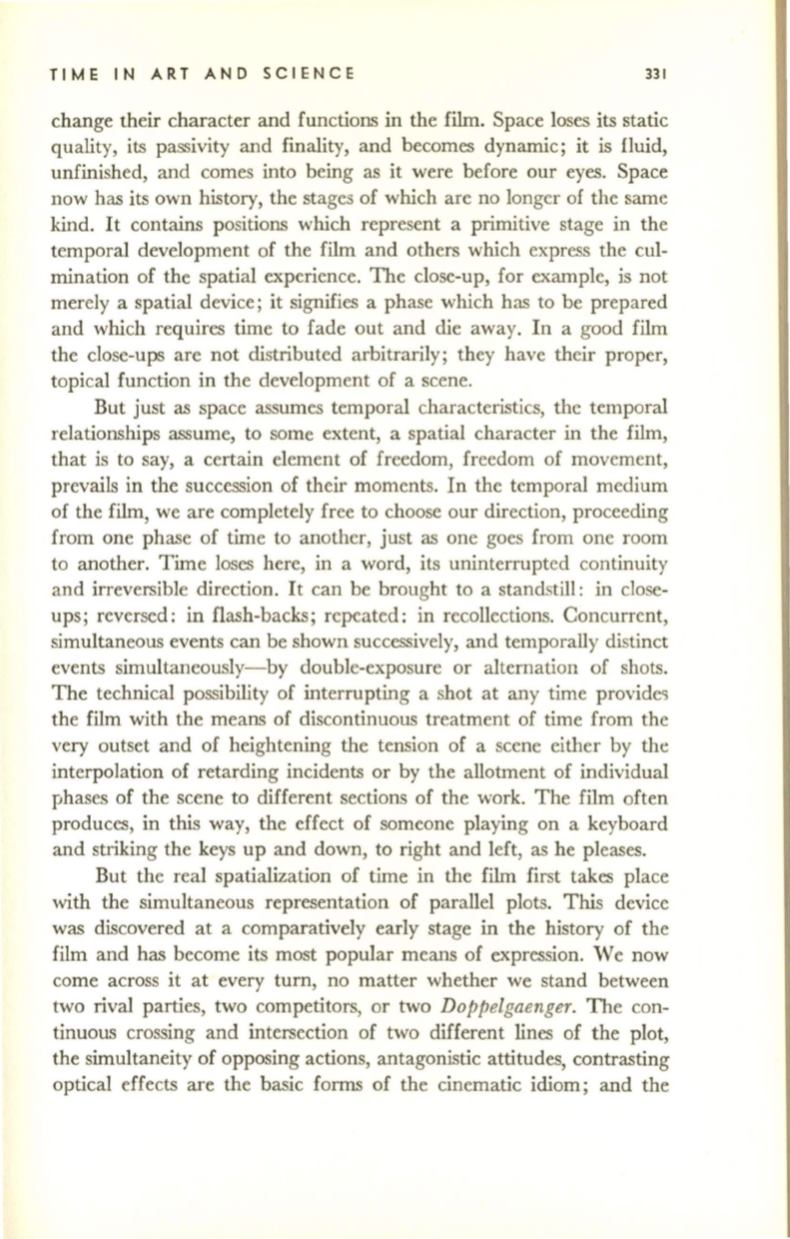
TIME IN ART AND SCIENCE
331
change their character and functions in the film. Space loses its static
quality, its passivity and finality, and becomes dynamic; it is fluid,
unfinished, and comes into being as it were before our eyes. Space
now has its own history, the stages of which are no longer of the same
kind. It contains positions which represent a primitive stage in the
temporal development of the film and others which express the cul–
mination of the spatial experience. The close-up, for example, is not
merely a spatial device; it signifies a phase which has to be prepared
and which requires time to fade out and die away. In a good film
the close-ups are not distributed arbitrarily; they have their proper,
topical function in the development of a scene.
But just as space assumes temporal characteristics, the temporal
relationships assume, to some extent, a spatial character in the film,
that is to say, a certain element of freedom, freedom of movement,
prevails in the succession of their moments. In the temporal medium
of the film, we are completely free to choose our direction, proceeding
from one phase of time to another, just as one goes from one room
to another. Time loses here, in a word, its uninterrupted continuity
and irreversible direction. It can be brought to a standstill: in close–
ups; reversed: in flash-backs; repeated: in recollections. Concurrent,
simultaneous events can be shown successively, and temporally distinct
events simultaneously-by double-exposure or alternation of shots.
The technical possibility of interrupting a shot at any time provide,>
the film with the means of discontinuous treatment of time from the
very outset and of heightening the tension of a scene either by the
interpolation of retarding incidents or by the allotment of individual
phases of the scene to different sections of the work. The film often
produces, in this way, the effect of someone playing on a keyboard
and striking the keys up and down, to right and left, as he pleases.
But the real spatialization of time in the film first takes place
with the simultaneous representation of parallel plots. This device
was discovered at a comparatively early stage in the history of the
film and has become its most popular means of expression. We now
come across it at every turn, no matter whether we stand between
two rival parties, two competitors, or two
Doppelgaenger.
The con–
tinuous crossing and intersection of two different lines of the plot,
the simultaneity of opposing actions, antagonistic attitudes, contrasting
optical effects are the basic forms of the cinematic idiom; and the


